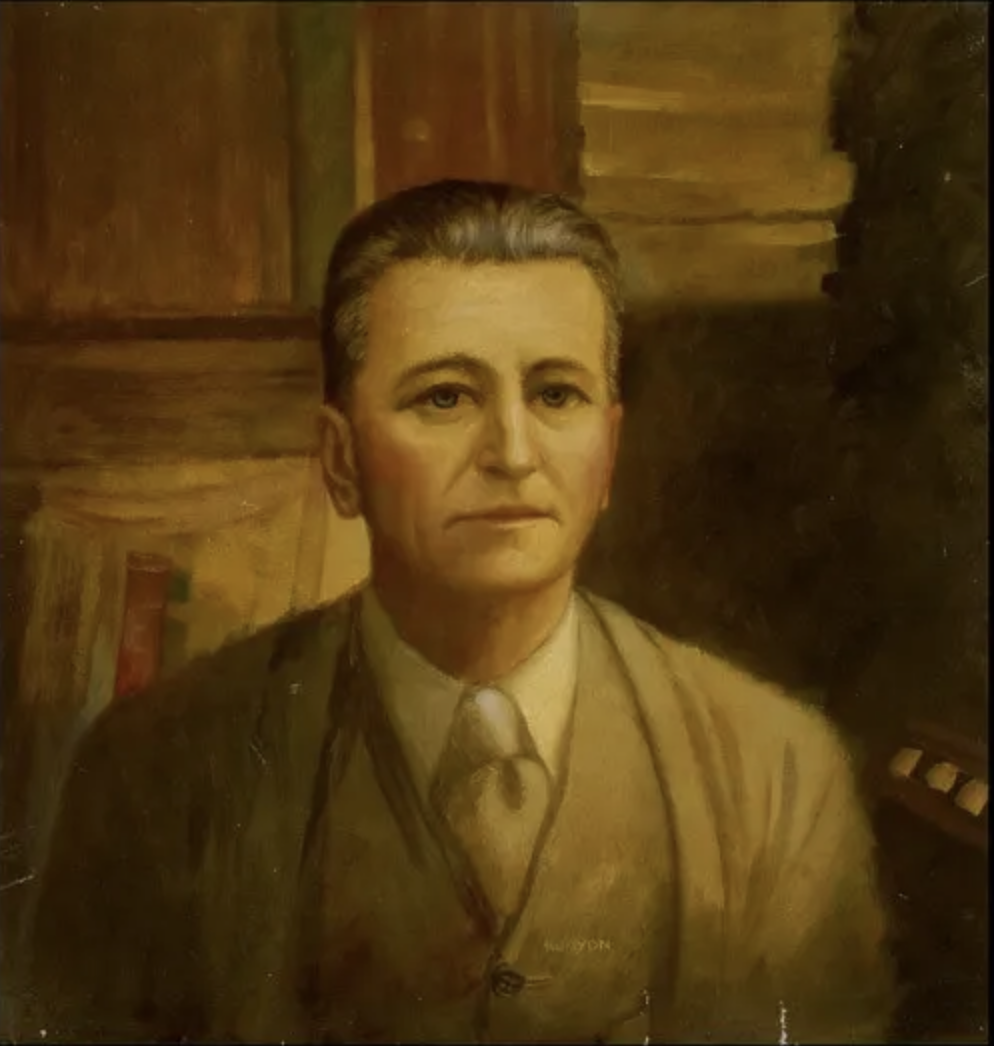A Portrait of F. Scott Fitzgerald
F. Scott Fitzgerald, by Hal Bayard Runyon, 1931.
I only know of two oil paintings of F. Scott Fitzgerald done during his lifetime. One is by David Silvette, and hangs in the National Portrait Gallery in Washington, D.C. The Silvette portrait, painted in 1935, has been much reproduced and often called the only painting of Fitzgerald done from life. There was another, though. This portrait was virtually unknown, in private hands for most of a century — and was destroyed in 2015. Its online image is all that we have left.
In autumn of 1931, Fitzgerald left Montgomery, Alabama, where he was living with his wife Zelda and daughter Scottie near Zelda’s family, on a train bound for Los Angeles. He was headed to Hollywood for a second attempt to make it as a screenwriter, under contract with Metro-Goldwyn-Mayer to work on the screenplay for a movie called Red-Headed Woman. Based upon the novel by Katharine Brush, it starred Jean Harlow in the title role as Lil, whose antics lived up to the film’s eventual tagline: “Every man — single or married — is fair prey.” Fitzgerald did some uncredited work before his contract ended; he had a miserable time in Hollywood, and left in early 1932.
While he was there, however, his path crossed at some point with that of Hal Bayard Runyon. Ten years Fitzgerald’s junior, Runyon was a San Francisco-born artist and engineer, who worked as a portraitist in Los Angeles in the early 1930s. Runyon spent most of his time in the movie world, painting its celebrities. Even after he left town to serve in the U.S. Navy during World War II, and as a designer for Bechtel thereafter, Runyon kept up his friendships in Hollywood, and was rumored to have had an affair with Sophia Loren early in her career. Runyon’s sculptures and paintings — many of lavish nudes — still appear at auction from time to time. A 1931 portrait of Darryl F. Zanuck by Runyon sold at Bonhams for $1000 in 2019; other works of his, less finished, can very infrequently be found on eBay for far less.
In 2010, Michaan’s Auctions of Alameda, California offered a Runyon portrait of F. Scott Fitzgerald for sale. Though online auction sites showed it as having sold twice, once for $900 and then for $475, the painting did not, in fact, sell. It was returned to its consigner. I was saddened to learn, recently, that the portrait was badly damaged in a flood in 2015, and that the owner threw it away.
It may not be a great portrait of Fitzgerald, but the surviving photographs of it show detail both arresting and moving. Runyon must have encountered Fitzgerald in the MGM Writers’ Building, and persuaded him to sit, some time during the 1931 holiday season. The three-piece suit is Fitzgerald’s usual formal attire, and the full Windsor knot in the tie is also accurate. The imagined row of leaning books behind him denotes him as a writer of real books, which would have pleased Fitzgerald — though the tired, worn face would not. This, too, is accurate, though. 1931 had been a dreadful year for Fitzgerald. His father died at the start of it, and he returned to America from France alone for the funeral, as Zelda was in hospital at Prangins, Switzerland, where she had been since the summer of 1930. She was not released until September 1931, and the Fitzgeralds quickly sailed for home thereafter. One of the reasons they chose to settle in Montgomery was that Zelda’s father, Judge Anthony Sayre, was very ill; he died in November, shortly after Fitzgerald arrived in Hollywood. The bottom half of Fitzgerald’s face in the portrait is poorly done, but the top half is brilliant: the thin Irish nose, the large sea-green eyes and definite eyebrows, the hairline just thinning and greying but still ash blond. Fitzgerald’s direct gaze is hard to meet. He looks right at the artist, and viewer, straight into you, as by many reports he did in life. It is a real pity that, having survived for over eighty years, this painting could not have been recognized and found earlier, and preserved at Princeton in the Fitzgerald Papers, or in a gallery or museum. Even damaged, it might have been restored. I’m grateful to have at least this representation of it, thanks to Michaan’s.

